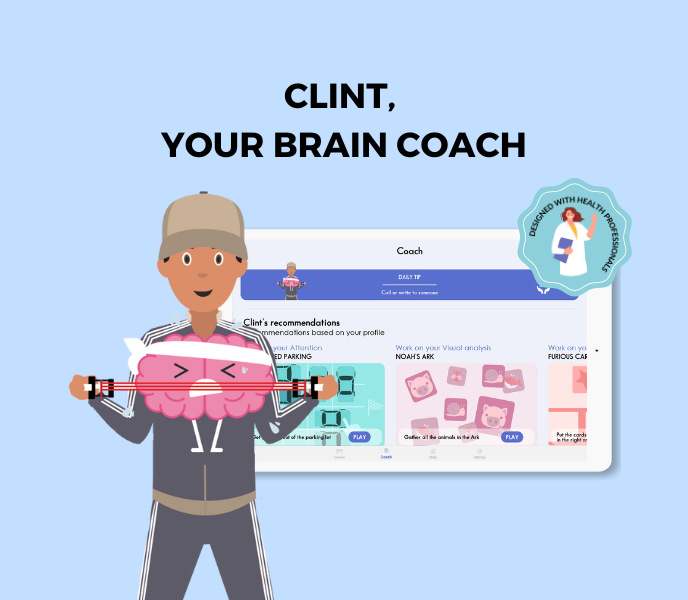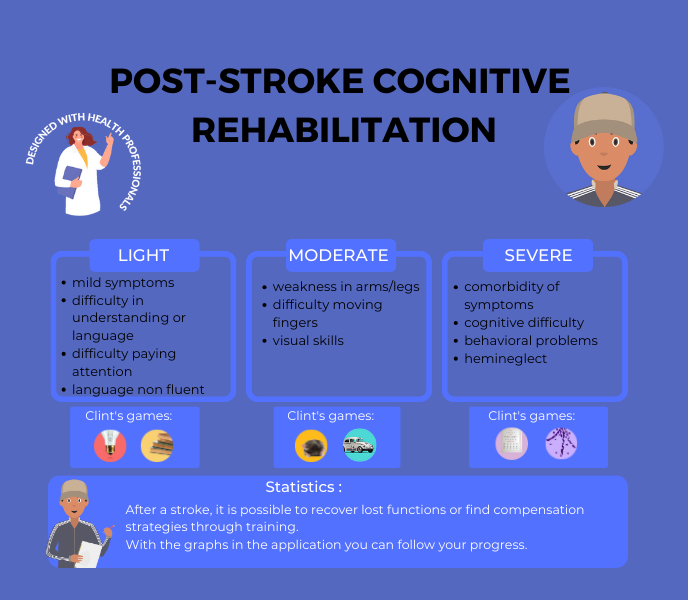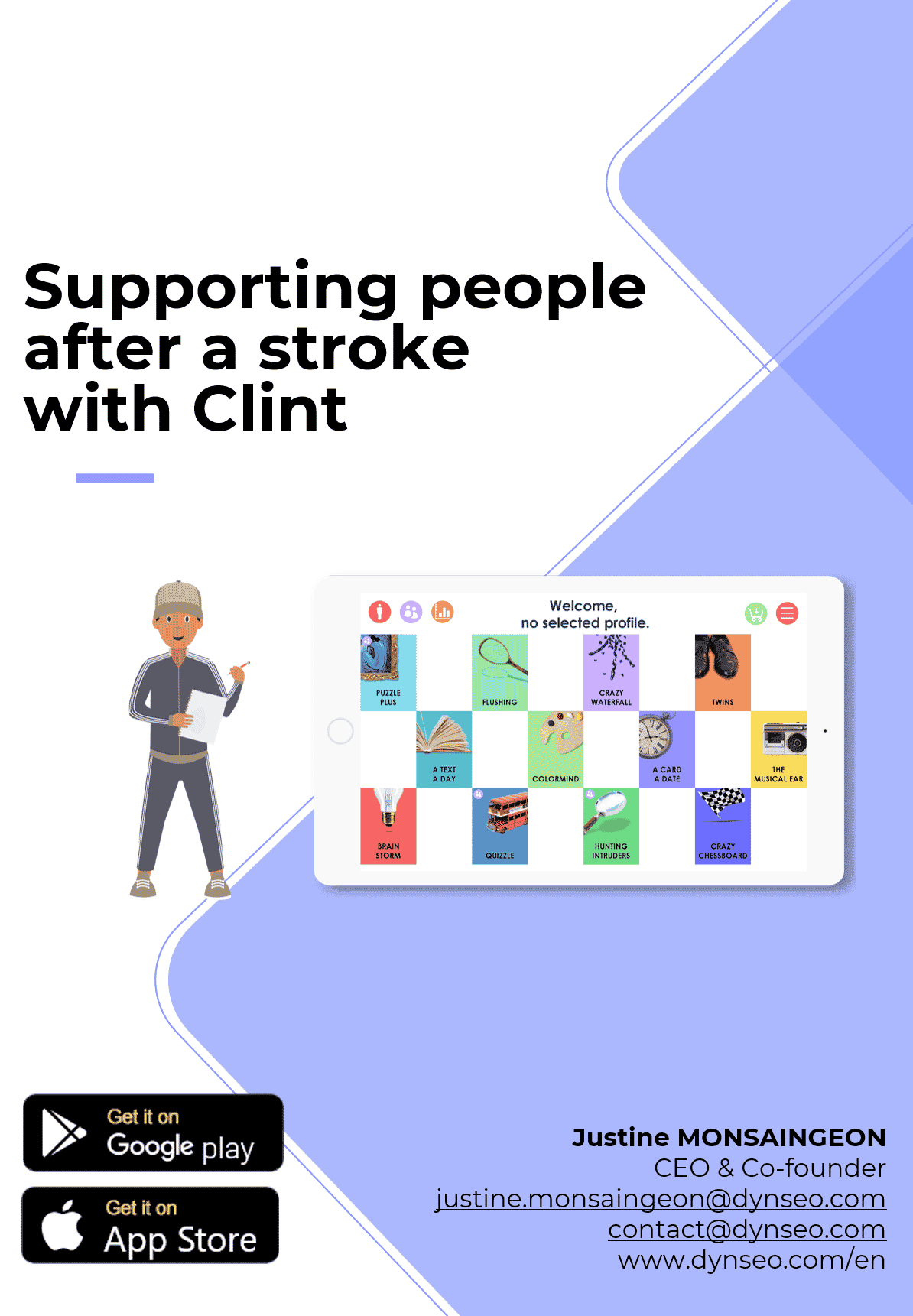Recovering from a stroke can be a challenging journey, but incorporating physical activity into your rehabilitation regimen can significantly enhance the recovery process. Following a stroke, engaging in targeted exercises plays a pivotal role in restoring mobility, strength, and independence.
Physical activity post-stroke is crucial for several reasons. It helps prevent muscle atrophy, improves circulation, enhances flexibility, and promotes neuroplasticity, the brain’s ability to rewire itself. Additionally, regular exercise reduces the risk of recurrent strokes and improves overall cardiovascular health.
In this guide, we will explore a variety of recommended exercises tailored to aid in stroke recovery. These exercises encompass a range of motions and intensities, catering to individuals at different stages of recovery. From simple stretching routines to more challenging strength-building exercises, each activity is designed to optimize physical function and facilitate a smoother transition back to daily activities. By embracing a proactive approach to rehabilitation, individuals can regain confidence, regain mobility, and strive towards a fulfilling life post-stroke.
Early Post-Stroke Movement
In the early stages of post-stroke recovery, gentle range of motion exercises and bed mobility techniques are essential components of rehabilitation. These activities focus on restoring flexibility, promoting circulation, and preventing muscle stiffness and contractures. Gentle range of motion exercises involve slow, controlled movements of the affected limbs, joints, and muscles, helping to maintain or improve their flexibility and function. Bed mobility techniques, on the other hand, aid individuals in relearning how to safely and effectively move in bed, such as rolling from side to side or shifting positions. These techniques not only enhance comfort but also reduce the risk of pressure ulcers and improve overall quality of life during the initial stages of stroke recovery. Integrating these early post-stroke movement strategies into a comprehensive rehabilitation plan sets the foundation for continued progress and functional independence.
Strengthening Exercises
Strengthening exercises play a pivotal role in the journey of recovery following a stroke, offering a beacon of hope for reclaiming strength, autonomy, and a sense of normalcy in daily life. These exercises are not just about building muscle; they’re about rebuilding lives, piece by piece, through the power of physical resilience and determination.
Upper Body Fortification: The journey to recovery often begins with the upper body, where strengthening exercises serve as a cornerstone for regaining the ability to perform essential tasks. Targeting the arms, shoulders, and chest, these exercises help restore the ability to reach out—to grasp the morning cup of coffee, to embrace a loved one, or to perform a myriad of daily tasks that demand upper body strength. Utilizing tools like light weights and resistance bands, or even the natural resistance offered by one’s own body weight, patients can engage in arm raises, bicep curls, and shoulder stretches. These exercises gradually enhance muscle tone and endurance, making each movement less of a challenge and more of a triumph.
Lower Body Revitalization: As the upper body regains strength, the focus shifts to the lower body, where exercises aim to anchor this newfound strength with stability and balance. Strengthening the legs is crucial for foundational activities such as walking, standing, and climbing stairs. Exercises like leg lifts, squats, and calf raises are instrumental in this phase of rehabilitation. They not only improve muscle strength but also enhance balance and coordination, critical factors in preventing falls and promoting independence. Each squat, each lift, is a step closer to walking confidently and reclaiming autonomy over movement.
Balance and Coordination: Integral to both upper and lower body strengthening is the emphasis on balance and coordination. Stroke recovery often involves relearning how to coordinate movements and maintain balance, a task where strengthening exercises play a dual role. By challenging the body to manage its weight through various exercises, individuals learn to control their movements more precisely, reducing the risk of injury and building confidence in their physical abilities.
Tailored Rehabilitation Programs: It’s important to recognize that each individual’s journey through stroke recovery is unique. Therefore, strengthening exercises are most effective when they are part of a tailored rehabilitation program designed by healthcare professionals. This personalized approach ensures that each exercise aligns with the individual’s specific needs, challenges, and goals, making the path to recovery a personal journey of growth and improvement.
The Holistic Impact of Strengthening Exercises: Beyond the physical benefits, engaging in a regimen of strengthening exercises has profound psychological benefits. It fosters a sense of progress, achievement, and self-efficacy, combating feelings of helplessness and depression that can accompany stroke recovery. As muscles strengthen and tasks become easier, the psychological boost can be just as significant as the physical improvements.
Incorporating both upper and lower body strengthening exercises into the rehabilitation process is not just about regaining lost muscle mass or mobility; it’s about restoring a sense of independence, confidence, and well-being. Each exercise, each repetition, is a step forward in the journey of recovery, a testament to the human spirit’s resilience, and a building block towards a more independent and fulfilling life post-stroke.
Balance and Coordination Activities
Balance and coordination activities are essential components of post-stroke rehabilitation, focusing on improving stability, equilibrium, and motor control. These activities target the intricate interplay between muscles, joints, and sensory systems, fostering enhanced proprioception and spatial awareness. By engaging in tailored balance and coordination exercises, individuals can regain confidence in standing, walking, and performing daily activities independently. These activities range from simple static balance exercises to more dynamic drills that challenge coordination and agility. Incorporating balance and coordination activities into rehabilitation programs promotes functional independence, reduces the risk of falls, and enhances overall quality of life for individuals recovering from stroke.
Standing Balance Exercises
Standing balance exercises are fundamental for individuals recovering from stroke, aiming to enhance postural stability, weight distribution, and control while standing. These exercises often involve maintaining various standing positions, such as tandem stance or single-leg stance, while focusing on proper alignment and weight shifting. Standing balance exercises help retrain the neuromuscular system, improve core strength, and restore confidence in weight-bearing activities. Gradually progressing from static to dynamic standing balance exercises challenges the individual’s balance control and promotes adaptation to different environmental demands. By incorporating standing balance exercises into rehabilitation routines, individuals can improve their ability to stand independently, reduce reliance on assistive devices, and regain functional mobility post-stroke.
Dynamic Balance Drills
Dynamic balance drills play a crucial role in post-stroke rehabilitation, emphasizing the integration of balance skills into functional movement patterns and activities of daily living. These drills involve dynamic movements such as walking, stepping, and changing directions, challenging balance reactions and coordination in real-life scenarios. By incorporating dynamic balance drills into rehabilitation programs, individuals can improve their ability to adapt to unpredictable environments, navigate obstacles, and maintain stability during dynamic activities. These drills also enhance motor planning, proprioception, and agility, facilitating smoother and more efficient movement patterns. Through consistent practice and progression, dynamic balance drills empower individuals to regain confidence in their balance and coordination abilities, enhancing their overall mobility and independence after stroke.
Proprioception Training
Proprioception training is a critical component of post-stroke rehabilitation, focusing on enhancing the body’s ability to sense its position, movement, and spatial orientation in space. Proprioceptive exercises aim to improve joint awareness, muscle coordination, and sensory feedback, aiding in the restoration of functional movement patterns. These exercises often involve balance boards, foam pads, and unstable surfaces to challenge proprioceptive feedback and stimulate neuromuscular adaptation. Proprioception training enhances body awareness, promotes joint stability, and reduces the risk of falls by improving the body’s ability to respond effectively to changes in terrain and posture. By incorporating proprioceptive training into rehabilitation routines, individuals can regain confidence in their movements, enhance motor control, and achieve greater independence in daily activities following stroke.
Flexibility and Stretching Routine
Flexibility and stretching routines are indispensable aspects of post-stroke rehabilitation, contributing to improved range of motion, joint mobility, and muscle elasticity. Following a stroke, individuals often experience muscle tightness and reduced flexibility due to prolonged immobility or spasticity. Therefore, prioritizing flexibility post-stroke is crucial for preventing contractures and maintaining functional movement patterns. Stretching exercises target major muscle groups such as the arms, legs, back, and neck, focusing on gently elongating muscles and releasing tension. These exercises may include gentle stretches, yoga poses, and range of motion activities designed to enhance flexibility and alleviate stiffness. By incorporating flexibility and stretching routines into the rehabilitation regimen, individuals can promote better circulation, reduce the risk of injury, and enhance overall physical well-being during the recovery process.
Cardiovascular Conditioning
Adapted and Modified Exercises
Adapted and modified exercises are vital components of stroke rehabilitation, offering personalized approaches to accommodate individual abilities and needs. Tailoring exercises to individual capabilities ensures that rehabilitation programs are both safe and effective, taking into account factors such as strength, balance, coordination, and cognitive function. This customization allows for gradual progression and optimal engagement without overwhelming the individual. Additionally, using assistive devices if necessary further supports individuals in completing exercises safely and independently. These devices may include walking aids, adaptive equipment, or modified exercise techniques designed to compensate for any physical limitations post-stroke. By embracing adapted and modified exercises, individuals can participate in rehabilitation programs with confidence, maximize functional gains, and regain a sense of control over their recovery journey.
Incorporating Functional Activities
Incorporating functional activities into post-stroke rehabilitation emphasizes the integration of daily living tasks as exercise opportunities, fostering practical and meaningful movement patterns. By incorporating tasks such as dressing, cooking, or gardening into exercise routines, individuals can seamlessly integrate rehabilitation into their daily lives while improving functional independence. These activities not only provide physical exercise but also promote cognitive engagement and emotional well-being by restoring a sense of purpose and accomplishment. Functional movement patterns focus on replicating real-life actions such as reaching, lifting, and bending, which are essential for performing daily activities independently. By prioritizing functional activities, individuals can enhance their ability to navigate the demands of daily life post-stroke, improve motor skills, and regain confidence in their abilities.
Supervised Rehabilitation Programs
Supervised rehabilitation programs offer invaluable professional guidance and support to individuals recovering from stroke, facilitating optimal recovery outcomes. The benefits of professional guidance include personalized assessment, tailored exercise prescriptions, and ongoing monitoring of progress and adjustments as needed. Under the supervision of trained healthcare professionals such as physiotherapists, occupational therapists, and rehabilitation specialists, individuals receive expert guidance to ensure exercises are performed safely and effectively. Accessing rehabilitation services may involve referral from healthcare providers, rehabilitation centers, or community-based programs. These services provide a multidisciplinary approach to stroke recovery, encompassing physical therapy, occupational therapy, speech therapy, and psychological support to address various aspects of recovery comprehensively. By participating in supervised rehabilitation programs, individuals can maximize their recovery potential, regain independence, and improve overall quality of life following a stroke. You also the CLINT brain training program, for stroke patients.
Monitoring Progress and Adjustments
Monitoring progress and making necessary adjustments are critical aspects of post-stroke rehabilitation, ensuring that individuals receive tailored and effective interventions throughout their recovery journey. Tracking physical improvements involves regular assessments of mobility, strength, and functional abilities. Healthcare professionals closely monitor these parameters to gauge the effectiveness of the rehabilitation program and identify areas that require attention. Modifying exercise routines as needed allows for a dynamic approach, adapting to the evolving needs of the individual. This may involve adjusting the intensity, duration, or type of exercises to align with the progress achieved and address any emerging challenges. By maintaining a proactive stance in monitoring and adjusting rehabilitation strategies, healthcare professionals can optimize the rehabilitation process, supporting individuals in achieving their functional goals and enhancing overall post-stroke recovery.
Safety Precautions During Exercise
Safety precautions during exercise are paramount, particularly in stroke rehabilitation, where individuals may face unique challenges and vulnerabilities. Avoiding overexertion is crucial to prevent undue strain on muscles and the cardiovascular system. It involves maintaining a balance between pushing physical limits for improvement and avoiding excessive fatigue or stress. Additionally, preventing falls and injuries is essential, especially considering potential balance and coordination issues post-stroke. This entails creating a safe exercise environment, removing obstacles, using stable support surfaces, and employing appropriate assistive devices when necessary. Supervision by trained professionals can also help mitigate risks and ensure exercises are performed safely. By prioritizing safety precautions, individuals can engage in rehabilitation activities confidently, minimize the risk of setbacks, and progress steadily toward their recovery goals.
Empowering stroke survivors through exercise not only facilitates physical recovery but also nurtures resilience, determination, and hope. Encouraging long-term commitment to exercise fosters a sustainable approach to rehabilitation, promoting ongoing progress and improved quality of life beyond initial recovery stages. By embracing exercise as a cornerstone of their journey, individuals cultivate a sense of agency and control over their health and well-being. Moreover, celebrating achievements in recovery, no matter how small, reinforces a positive mindset and encourages continued perseverance. Each milestone reached signifies a triumph over adversity and serves as a testament to the strength and tenacity of the human spirit. Through dedicated commitment and acknowledgment of progress, stroke survivors can navigate their recovery journey with confidence, resilience, and optimism for the future.
AND FOR FURTHER INFORMATION

CLINT, YOUR BRAIN COACH
With your JOE brain coach, you choose which cognitive functions to target: attention, concentration, executive functions, mental agility, strategy implementation, etc. A fun, efficient program that supports you every day.
Other articles that might interest you:
Reconstructing After Stroke: Redefining Identity and Goals.
A stroke is a serious medical condition that occurs when blood flow to the brain is interrupted, causing damage to...
The Different Types of Stroke Explained: Ischemic, Hemorrhagic and TIA.
A stroke is a serious medical condition that occurs when blood flow to a part of the brain is interrupted or reduced,...
Preventing Stroke Recurrence: Measures and Lifestyle Changes.
A stroke is a serious medical condition that occurs when blood flow to the brain is interrupted, causing damage to...





